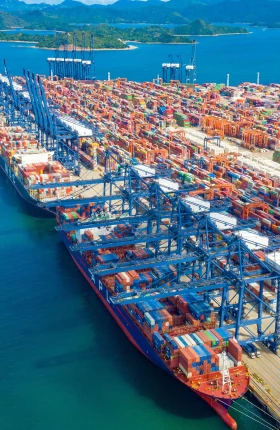In January 2025, as global attention turned to tariffs, we made two predictions. The first was that uncertainty would rule the trade landscape for some time. The second was that the long-standing international order based on the WTO system’s “most favored nation” principle would be replaced by a patchwork of bilateral country-specific tariff rates and implementation schemes.
Uncertainty has certainly ruled since January and will continue for the foreseeable future. The tariffs announced on April 2 were paused until July 9, and implementation has now been delayed until August 1. In addition to the initial agreement with China, there have been two deals announced so far—the UK and Vietnam—which suggests that more delays are possible if country negotiators are not able to conclude deals by the new August 1 deadline, although President Trump stated on July 8 that there would be no extensions. The lack of specifics about the deals we have seen so far—three- to six-page frameworks rather than the traditional trade agreements that routinely exceed 1,500 pages—indicates there are still a lot of details to be nailed down.
Trading partners now fall into four main groups. First, China, which has been the subject of its own bilateral negotiations. Second, Vietnam and the UK, which have reached agreements through newly announced deal frameworks. Third, other partners (14 as of July 8th, with more promised) that have received letters outlining new tariff rates, also set to take effect on August 1. Last, dozens of other trading partners for which the pause on tariffs has been extended until August 1, with no changes to the rates.
For most countries, the tariff rates remain largely in line with those announced in April. Starting with the Vietnam deal, the administration has made a point of including anti-transshipment language, stating that goods rerouted through other countries to circumvent tariffs will be subject to higher rates. Overall, tariffs on non-exempted goods across all affected countries will increase from the current 10% global baseline starting August 1. Even at this baseline, rates will be approximately four times higher than in January 2025 and significantly above levels seen under previous US administrations.
Featured Insights: Explore the ideas shaping the future of business
Two Big Partners
For businesses involved in US trade with Japan and South Korea—the fifth- and seventh-largest US trading partners, respectively—the need for close monitoring and scenario planning is especially urgent. President Trump has posited tariffs of 25% on goods from each country effective August 1 if they do not reach new trade deals.
Both countries have been actively, but so far unsuccessfully, negotiating with the US administration. The US has large goods trade deficits with both. Japan exports almost $150 billion of goods to the US, including almost $64 billion in autos and auto parts. The US is Japan’s second-largest trading partner after China, and autos represent 52% of exports to the US, making them a widely reported sticking point in negotiations. South Korea’s US exports total more than $130 billion and include more than $50 billion in automotive products and parts. The US is the second-largest trading partner after China, and autos represents 40% of US-bound exports.
Both countries bring attractive resources and capabilities to a potential trade deal. They can bring potential investment commitments, including international companies that can invest in strategic sectors such as shipbuilding and semiconductors. But both governments also have complex domestic political circumstances that could restrict their flexibility in trade negotiations. Moreover, each of these countries negotiated a trade deal during Trump’s first term. Korea and the US renegotiated a 2000s-era agreement known as KORUS, and Japan negotiated the more limited US-Japan Trade Agreement of 2018.
Next Steps for Companies
The rules of the old WTO-based multilateral system were transparent, and complexity was low. The new bilateral patchwork system taking shape has many more unknowns and higher complexity. We are starting to gain clarity about the contours of the new system, and greater complexity is all but certain to be a big and potentially lasting factor.
Companies can move to assess the impact and evaluate the implications of new deals and frameworks. They can also continue to prepare for the unknown through scenario and contingency planning and monitoring areas still in flux, including country deals and sector-specific developments. If they have not already done so, companies can establish tariff command centers to identify and put in motion mitigation levers. Actions should address trade compliance, supply chain, commercial considerations, and pricing in addition to scenarios and policy.
And, of course, they need to stay tuned for more bilateral deals to come later in the summer, including potentially with major partners such as the EU. From a global trade perspective, the summer has begun to heat up.












